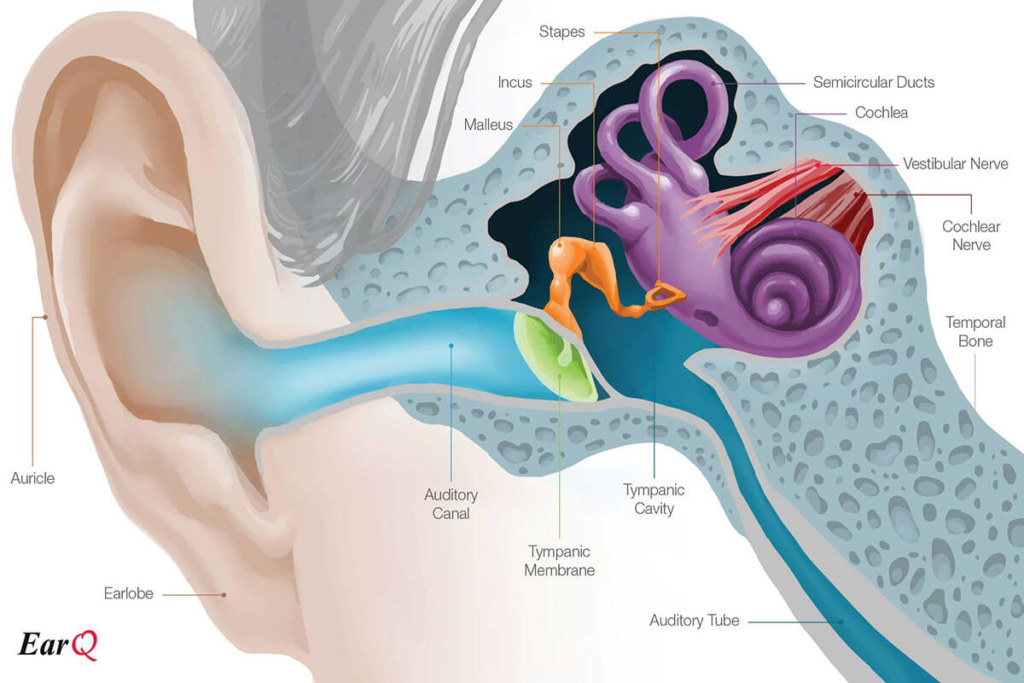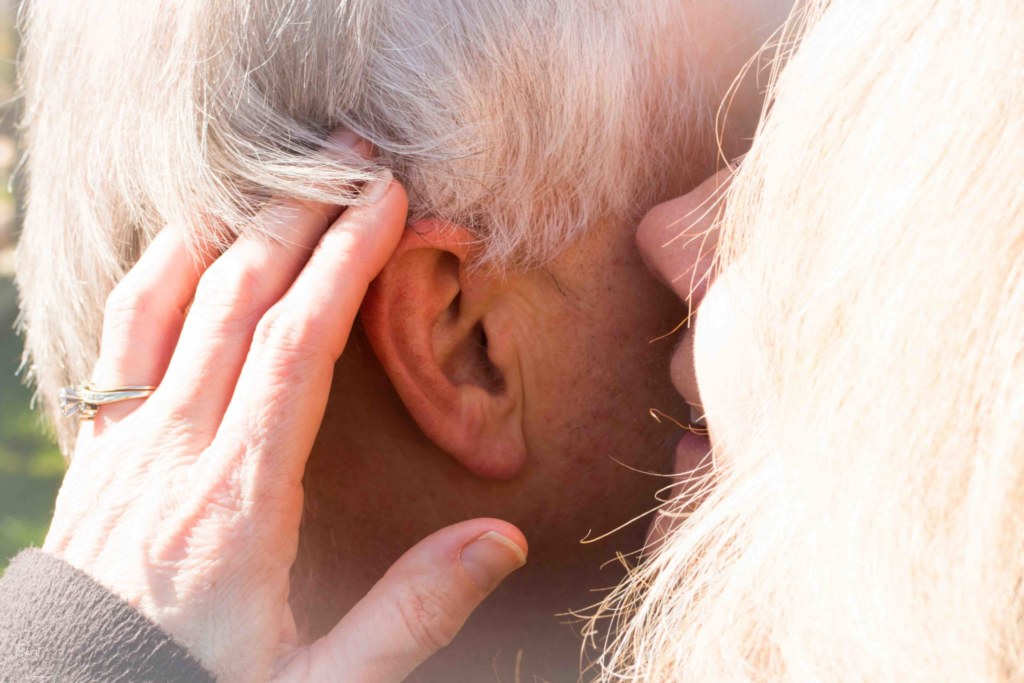Approximately 48 million Americans have sensorineural hearing loss (SNHL). This is caused by damage to the inner ears and cannot be reversed. SNHL can make it difficult to hear soft sounds. Even loud sounds can be difficult to hear or muffled–a phenomenon also referred to as experiencing sound voids. SNHL can eventually lead to deafness.
Two types of hearing loss are conductive loss and mixed loss.
Conductive hearing loss occurs when sound is blocked from reaching the middle ear or outer ear. Mixed hearing loss is when you have both SNHL and conductive hearing loss.
Hearing loss is caused by damage to the auditory nerves, hair cells, or brain pathways. Hearing loss is more common as you get older.
What Causes Sensorineural Hearing Loss?
Aging In Place interviewed Angela Shoup (President, American Academy of Audiology) to explain the causes of sensorineural hearing loss. She is also the executive director of the Callier Centre for Communication Disorders at The University of Texas at Dallas.

Shoup says that to understand sensorineural hearing loss fully, you first need to understand how sound waves are heard. The sound waves travel through the ear canal from the outer ear to the tympanic membrane, or eardrum. Three connected bones in the middle ear vibrate when the eardrum vibrates. This vibration then passes on vibrations to the fluid-filled inner ears. The inner ear contains thousands of hair cells, much like the keys on the piano. These hair cells encode the information and transmit it to the auditory nerve. The brain then receives sound information.
According to Shoup, hearing loss is caused by damage to the auditory nerves, hair cells, or brain pathways. Hearing loss is more common as you get older. A third to a quarter of the population between 65-75 years old and over 75 years old has some hearing loss. This number increases to 40% and 50% for those older than 75.
Sensorineural hearing loss is gradual and gets worse over time. The following are some of the most common potential causes of this type of hearing loss:
- Mumps, meningitis, or Multiple Sclerosis are all possible illnesses.
- Toxic medications for the hearing
- Hearing loss due to genetic factors
- Age
- Head trauma
- Problems in the formation of the ear canal, inner ear, or eardrum
- Loud noise exposure
It’s possible to find it hard to hear conversations in background noise, or difficult to understand soft voices, due to noise-induced hearing loss.
Conductive Hearing Loss
Conductive hearing loss occurs when sound waves are not transmitted to the inner ear. Here are some examples of conductive loss:
- Excessive ear wax in your ear canal
- Fluid from ear infections and bones stiffening in the middle ear

Shoup says that conduction hearing loss can be treated medically or surgically. However, amplification might be an option if hearing is not improving. Sensorineural hearing loss can be caused by damage to the auditory nerves or brain networks that process sound. Amplification devices, such as hearing aids that are custom-fit for you, can be used to treat sensorineural hearing loss.
Sudden Sensorineural Hearing Loss

Although hearing impairment with SNHL is usually gradual, some cases cause sudden deafness. Sudden sensory hearing loss (SSHL) is an unexplained, sudden hearing loss. It may occur in one or several days. SSHL can affect one ear and is considered a medical emergency by health care professionals.
How is Sensorineural Hearing Loss Diagnosed?

If you believe you may have SNHL, it is important to book a visit with an audiologist or otolaryngologist. The following are the components of a hearing loss diagnostic test:
Wear hearing protection, such as earplugs and protective earmuffs, if you’re somewhere with loud noise exposure (such as a concert or construction site). To protect your hearing, reduce the volume if you listen to loud music.
- A doctor will examine the ears using an otoscope. This medical device allows the doctor to check for physical problems and obstructions.
- The air conduction test: In this test, you’ll wear headphones to listen to the doctor play different pitches and tones. You’ll then indicate when you hear certain sounds.
- Speech recognition test: The speech recognition test is similar to the air conduction tests. It involves playing sentences or words at different volumes.
- Bone conduction tests: A bone conduction test is when a doctor attaches a bone band to the bone behind the ears (also known as a bone oscillator). Through the bone, the device will transmit sounds to the inner ear.
Your diagnostic hearing test results will be available immediately and recorded on an audiogram. The audiogram will show you what you can hear at various volume and pitch levels. Volume is measured using decibels, and pitch is measured in hertz. Audiogram results will tell you if you have normal hearing loss, severe hearing loss, or profound hearing loss.
Sensorineural Hearing Loss Treatment Options
Unfortunately, SNHL cannot be cured. It can, however, be treated.
Hearing Aids
Wearable hearing aids amplify sound. The microphone in a hearing aid receives sound and converts it to a digital signal. The amplifier amplifies the digital signal and sends it into the ear. You can adjust the level of amplification required for your environment by using different settings on some devices.
The cost for hearing aids is prohibitive, and not all insurance plans will pay the cost. The average cost for a pair of hearing aids is usually in the thousands.
Cochlear Implants
Cochlear implants are surgically placed, unlike hearing removable aids. These small electronic devices combat deafness by stimulating the cochlear nervous system. As a result, cochlear implants may provide better sound quality than hearing aids. However, they will require rehabilitation and training to be the most effective.
Cochlear implants can be expensive. They cost, on average, over $40,000. Check your insurance documents to find out if you are covered.
Is Sensorineural Hearing Loss Preventable?
SNHL can be caused genetically or by illness. However, there are ways to reduce your chances of hearing loss.
Wear hearing protection, such as earplugs and protective earmuffs, if you’re somewhere with loud noise exposure (such as a concert or construction site). To protect your hearing, reduce the volume if you listen to loud music.
If you’re on prescribed medication, ask your doctor if you’re in danger of hearing loss. If so, as their patient, you can talk to your doctor about other options.

